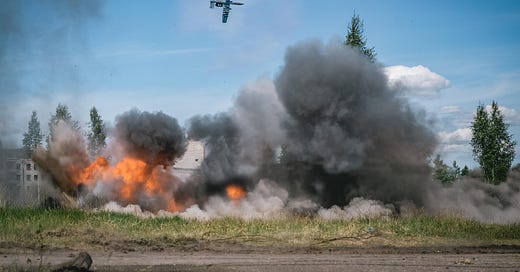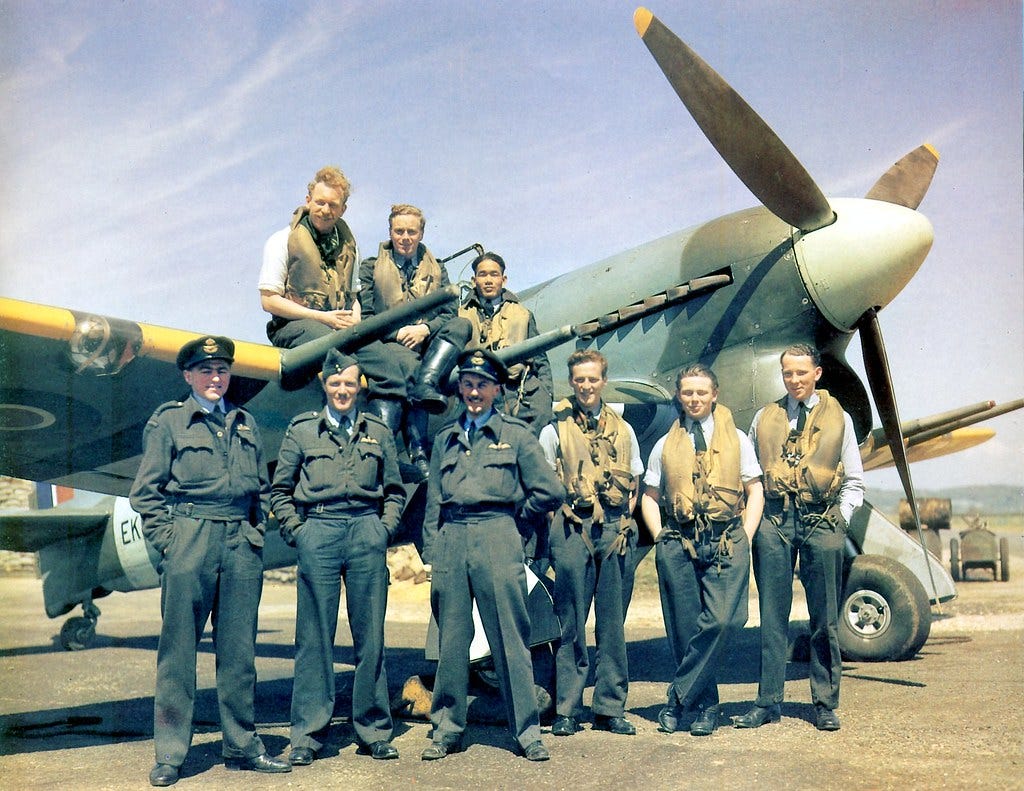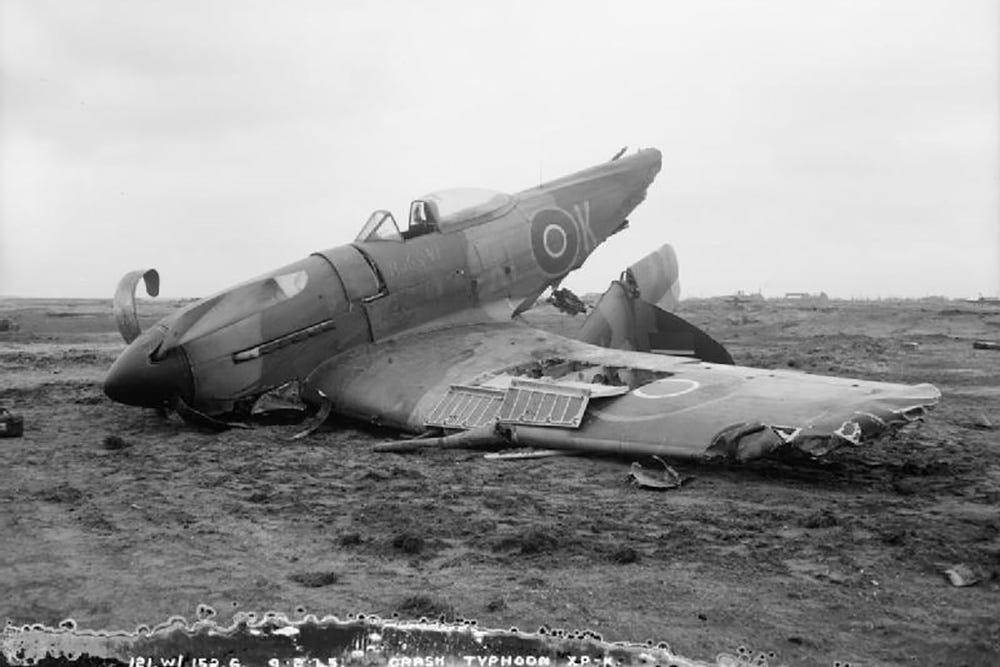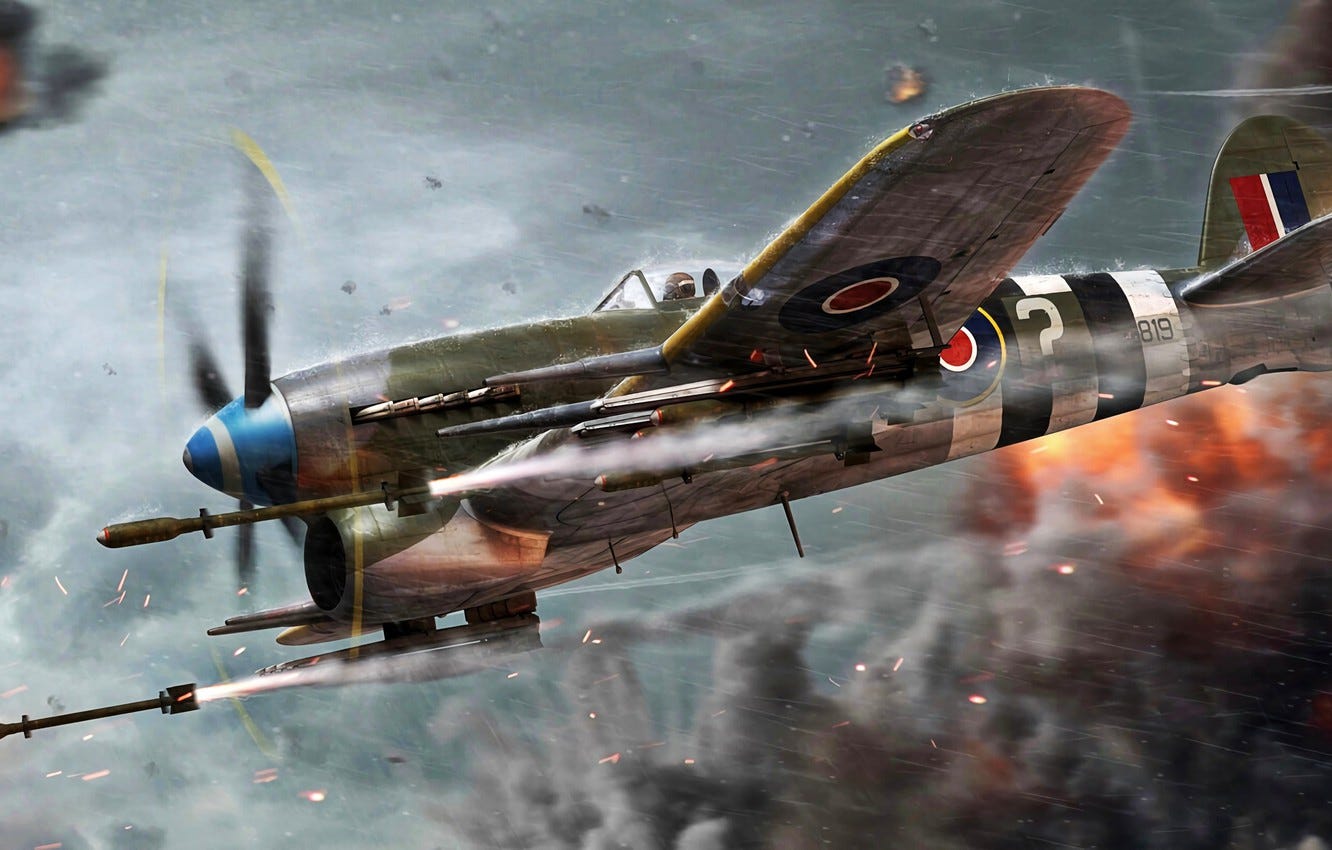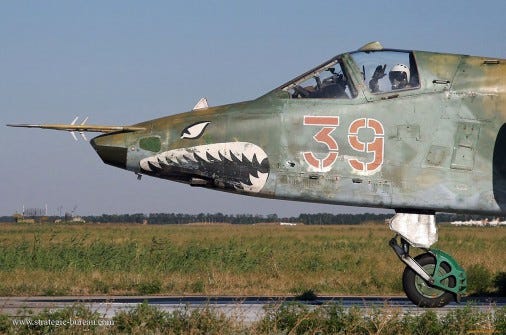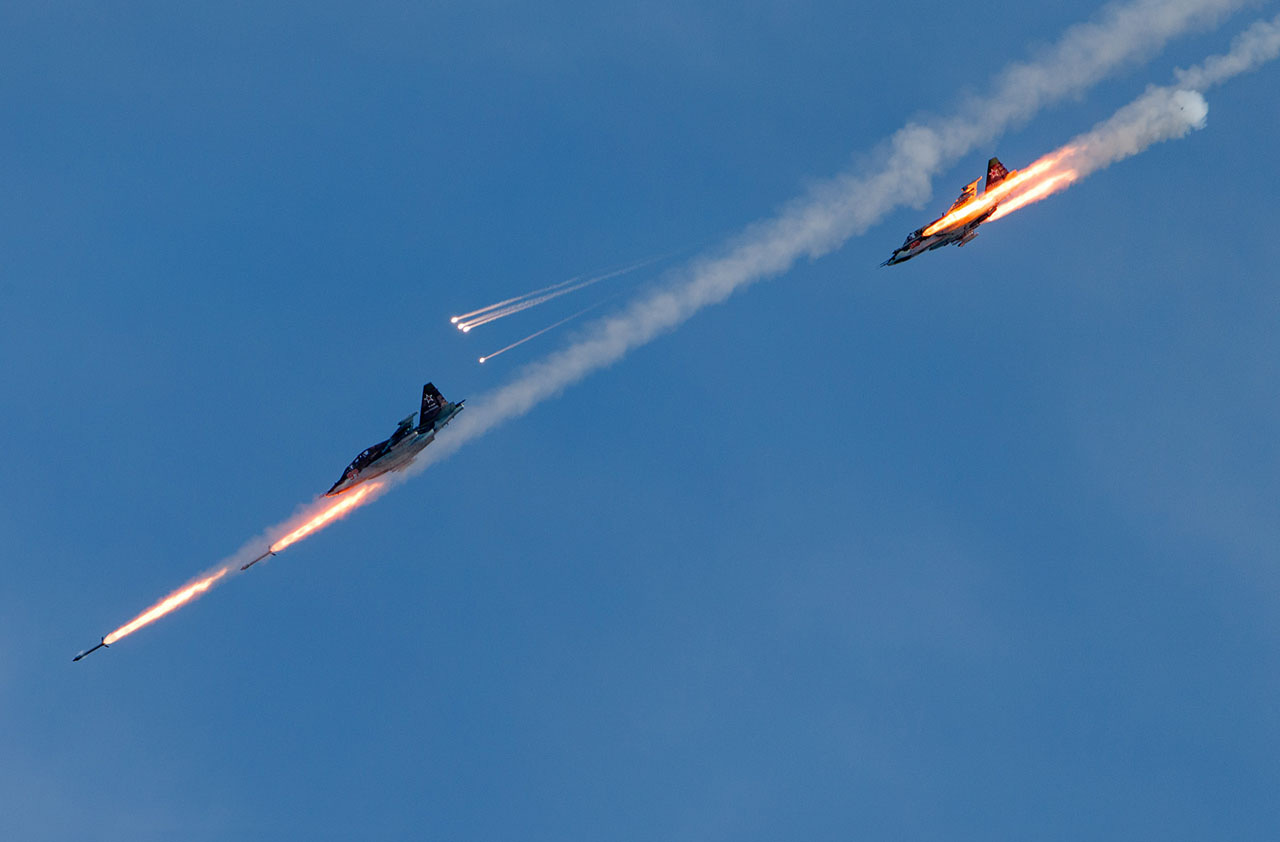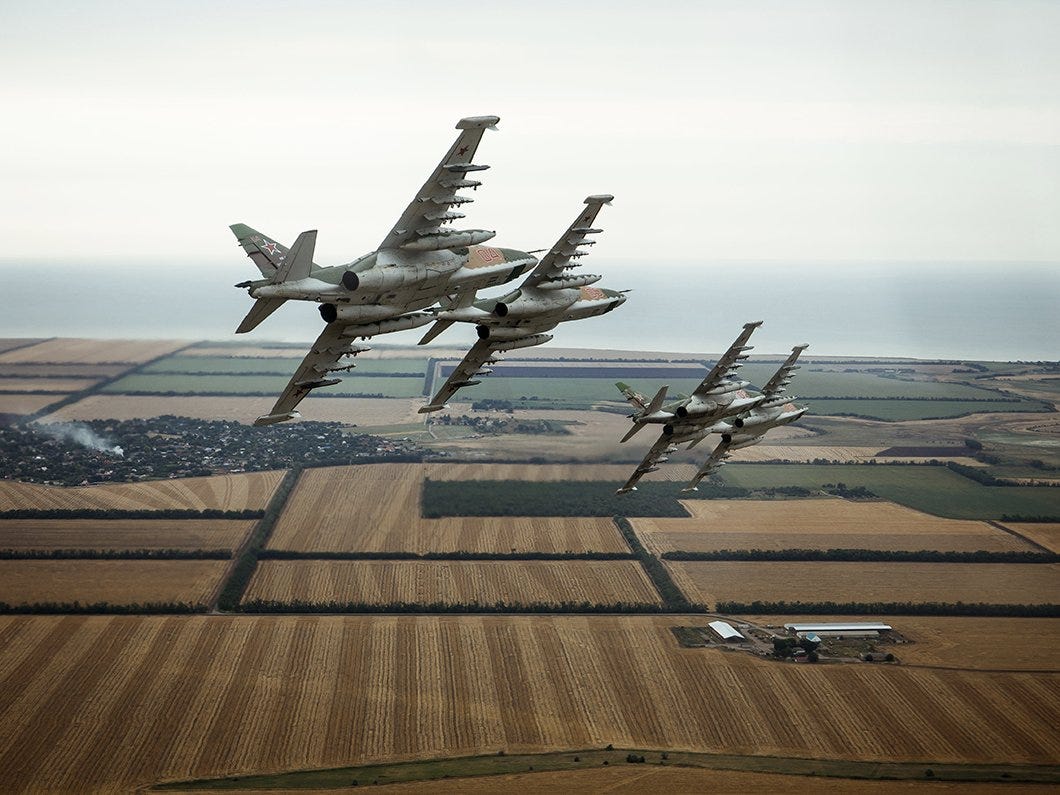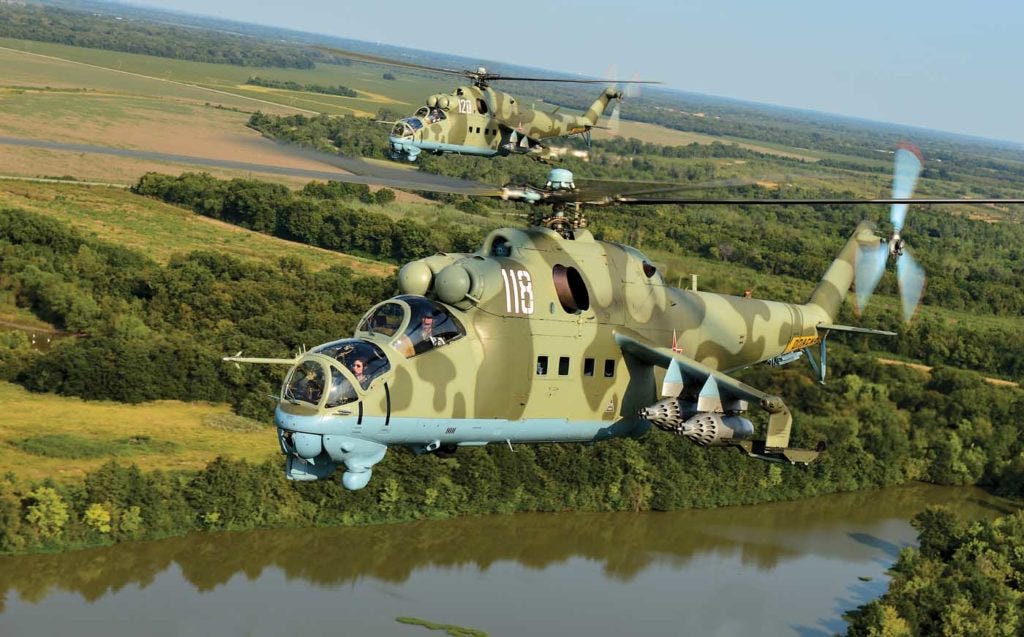Born in the desperate last days of World War I, close air support is now over a hundred years old. From the trench-strafing carnage of the 1910s via the murderous Spanish Civil War, close air support came of age in the Second World War. Throughout its history, it has been repeatedly forgotten by air forces across the world before being hurriedly released, often too late. The US Department of Defense defines CAS as “air action by fixed- and rotary-wing aircraft against hostile targets that are in close proximity to friendly forces and that require detailed integration of each air mission with the fire and movement of those forces.” Across the last bloody 100 years, certain aircraft types have excelled in the role. The following list is by no means exhaustive, but all the types mentioned deserve their inclusion.
10. Hawker Typhoon: Eisenhower's saviour
If not exactly a failure, it was fair to say that in early 1943, the Hawker Typhoon was regarded as, at best, a qualified success in its primary role as an air superiority asset. Its subsequent life as a fighter bomber would soon change that. Conceived by Hawker as a Hurricane replacement, the Typhoon ran into terrible trouble with its exotic engine and previously unknown aerodynamic effects caused by its great speed. Plus, the tail kept falling off. A tortuous development and early service life eventually eradicated most of the bugs and the Typhoon enjoyed a brief moment of fame as the only aircraft with the speed necessary to intercept the Focke-Wulf Fw 190. The improved Spitfire Mk IX soon closed that particular niche as it was a generally superior fighter. Still, by then, the Typhoon had found its true forte, attacking not other aircraft but ground targets.
This spectacularly successful change of role was primarily the result of one man, Roland Beamont. Commander of one of the first Typhoon units, 609 Squadron, Beamont realised that the Typhoon's strength, heavy armament and low altitude speed made it an ideal ground attacker. In late 1942, he obtained permission for 609 sqn to fly on wide-ranging attacks over occupied France by day and night. The results, even though these missions were flown singly or in pairs, were dramatic: 609 sqn alone, destroying over 100 locomotives in the following six months whilst shooting down 14 Fw 190s in the same period. The cancellation of the Typhoon programme, which had been a serious consideration at the time, was never considered again, and the aircraft went from strength to strength in its new role. Bomb racks were added, as a result, the Typhoon could carry a 1000-pound bomb under each wing, representing a bombload greater than the Bristol Blenheim (still in service with the RAF in 1942 as a light bomber), but in stark contrast, the Typhoon was over 100 mph faster and a highly capable fighter, unlike the Blenheim which was effectively defenceless if intercepted. More impressive still was the armament of eight 60 lb rockets that the Typhoon began utilising in 1943. It was famously said that a salvo of all eight rockets represented a destructive force equivalent to a broadside from a destroyer. Whether or not this was actually true, the psychological effect of the rocket armament was impressive, which was useful as the rockets, whilst extremely powerful, were notoriously difficult to aim. Analysis of battlefields showed that many vehicles had been abandoned by crews after suffering only superficial damage from rocket-firing Typhoons. Rockets and bombs could be used interchangeably on the same aircraft but in practice, squadrons tended to specialise in one weapon or the other.
Following D-day, as the Allies advanced into Europe, the Typhoons operated a system known as the 'Cab Rank'. Developed by the RAF in the Western Desert and refined during the campaign in Italy, standing Typhoon patrols could be called in by RAF personnel assigned to Army units and known as Forward Air Controllers to attack targets at extremely short notice. This was the first application of genuinely close air support on a large scale in which specific targets could be identified to pilots by troops on the ground and it proved decisive. So successful was the system that some 23 Typhoon squadrons served with the 2nd Tactical Air Force between 1944 and 45 as it advanced across Europe into Germany.
To give but one example of the effectiveness of the Typhoon, on the 10th of July, at Mortain, flying in support of the US 30th Infantry Division, Typhoons flew 294 sorties, firing 2,088 rockets and dropping 73 tons of bombs. Dwight D. Eisenhower, the Supreme Allied Commander, said of the Typhoons, "The chief credit in smashing the enemy's spearhead, however, must go to the rocket-firing Typhoon aircraft of the Second Tactical Air Force... The result of the strafing was that the enemy attack was effectively brought to a halt, and a threat was turned into a great victory." The German Army's Chief of Staff stated that the attack had been brought to a standstill by 13:00 '...due to the employment of fighter-bombers by the enemy, and the absence of our own air support.'
The Typhoon was developed into the similar but superior Tempest which took over the ground attack role, and all had left RAF service before the end of 1945. Today, of 3317 built, only a single complete example survives.
9. Sukhoi Su-25
Created to support Soviet ground forces, the Su-25 went to war the same year it entered service, 1981. The aircraft's baptism of fire was in Afghanistan, where it demonstrated the ability to generate higher sortie rates than any other type, even in the most austere conditions. It was a brutal war for the Su-25: 22 aircraft were lost in combat operations, and seven were destroyed on the ground. But these hard lessons were learned and led to modifications which enhanced the aircraft's survivability.
Since then, it has fought in over 15 wars, sometimes — as in the Russo-Ukrainian War and the Georgian War (the region, and later nation, that produced the majority of Su-25s) — on both sides. The Su-25 is the epitome of the Soviet engineering principle of toughness, simplicity and the spurning of unnecessary high technology.
Photo Credit : Vadim Savitskiï
The aeroplane has a conventional layout, with considerable amounts of titanium armour and an internal Gryazev-Shipunov GSh-30-2 (ГШ-30-2) 30-mm dual-barrel autocannon which uses the Gast principle to generate high rates of fire (1000-3000rpm). The wings each have five hard points, making the 'Frogfoot' a versatile weapons platform and easy to fit with varied bulky weapons and stores. The Su-25 is the most widely exported CAS fixed-wing aircraft of all time having served with over 30 nations.
8. Mil Mi-24 'The Flying Tank'
The Mi-24 was conceived from the outset as a flying infantry fighting vehicle. It is can survive multiple hits by rifle and 12.7-mm rounds.[/caption]
The first dedicated Soviet attack helicopter, the Mi-24, is big, well-armed and extremely fast (grabbing a slew of world speed records in the 1970s). Since its introduction in 1972, it has become the most widely used combat aircraft of all time, fighting in over 30 wars across the world with a staggering 68 operators. It is unique in that it is an attack helicopter with a sizeable troop compartment that is able to accommodate up to eight passengers. As with the Su-25 — the simplicity, durability and insensitivity to rough in-the-field maintenance keep it going when other more exquisite machines are grounded.
Keep reading with a 7-day free trial
Subscribe to Hush-Kit Aviation Newsletter to keep reading this post and get 7 days of free access to the full post archives.
